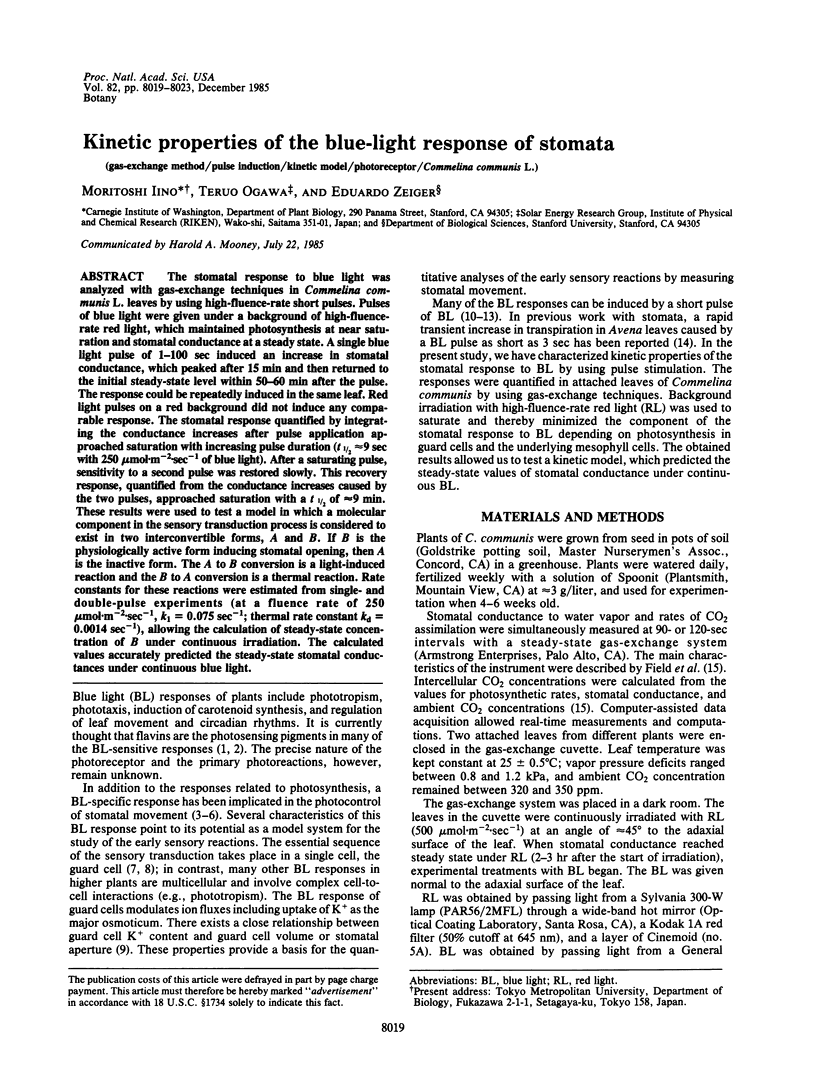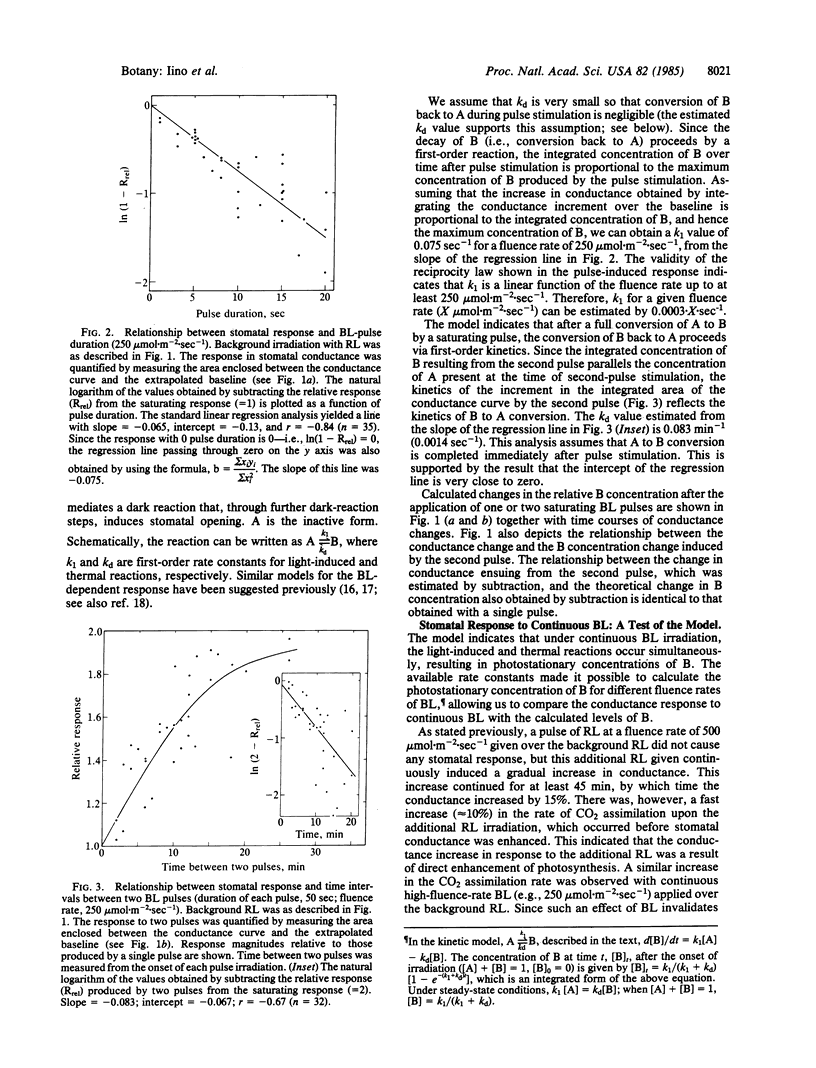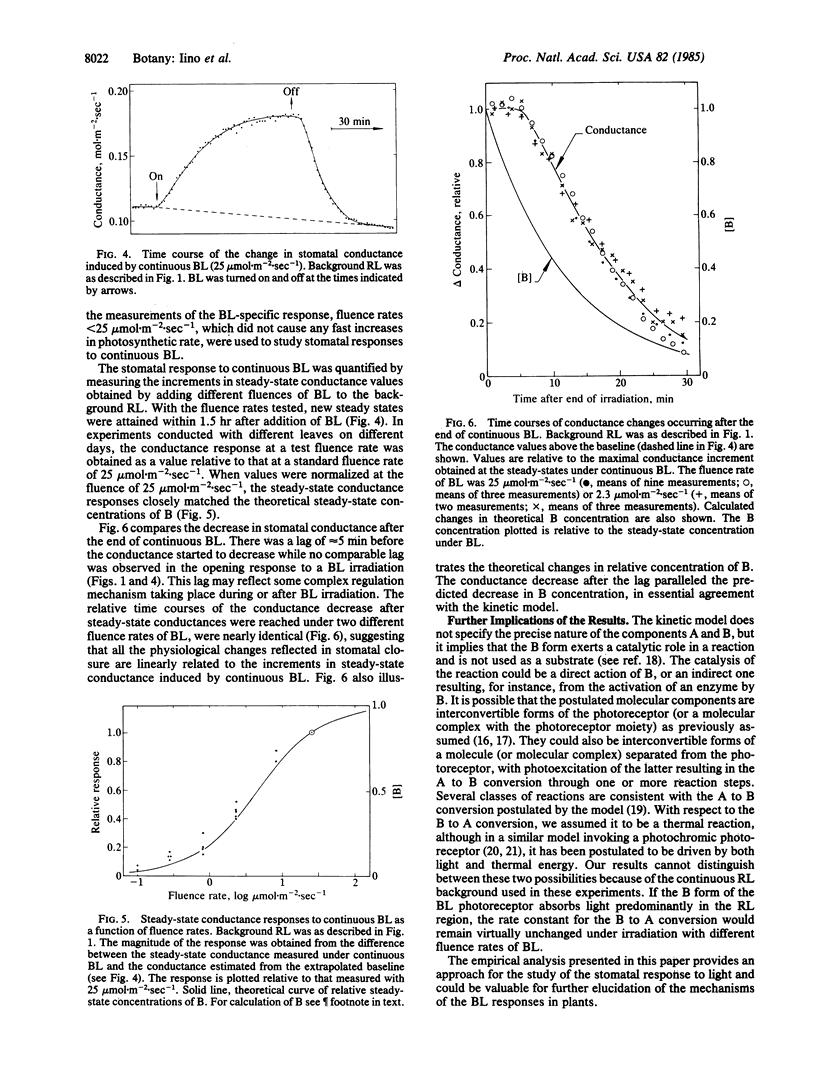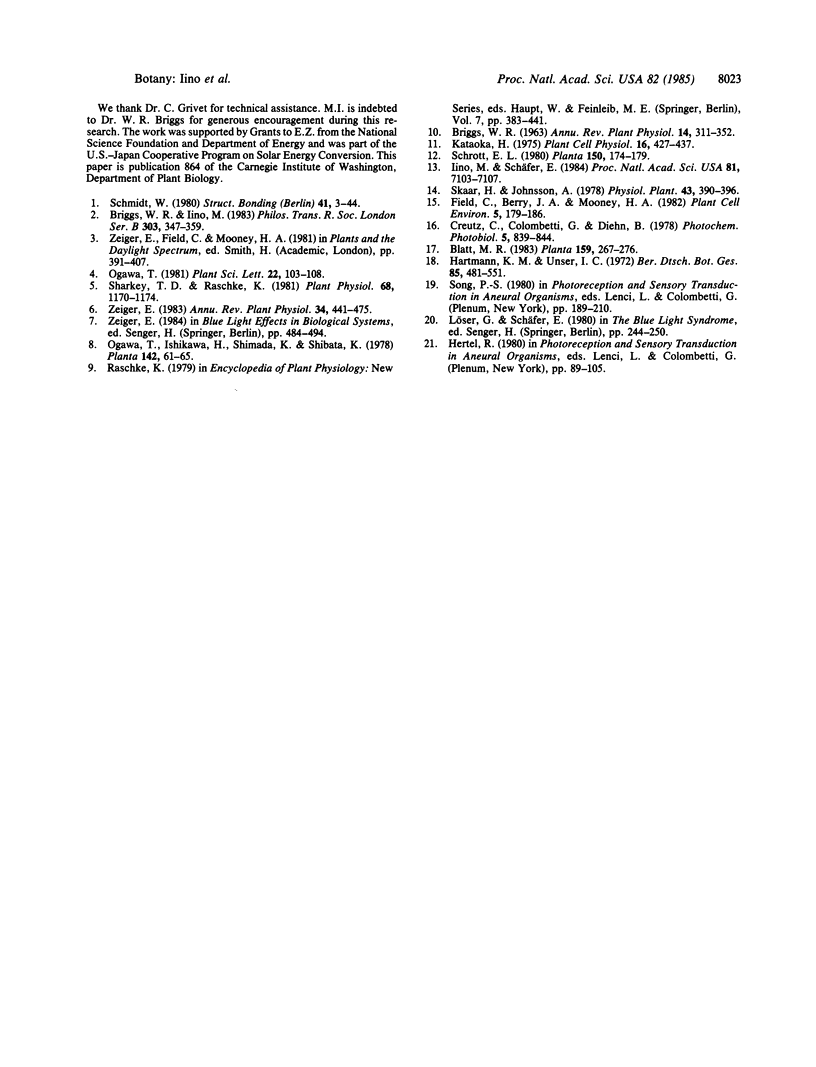Abstract
The stomatal response to blue light was analyzed with gas-exchange techniques in Commelina communis L. leaves by using high-fluence-rate short pulses. Pulses of blue light were given under a background of high-fluence-rate red light, which maintained photosynthesis at near saturation and stomatal conductance at a steady state. A single blue light pulse of 1-100 sec induced an increase in stomatal conductance, which peaked after 15 min and then returned to the initial steady-state level within 50-60 min after the pulse. The response could be repeatedly induced in the same leaf. Red light pulses on a red background did not induce any comparable response. The stomatal response quantified by integrating the conductance increases after pulse application approached saturation with increasing pulse duration (t½ ≈9 sec with 250 μmol·m-2·sec-1 of blue light). After a saturating pulse, sensitivity to a second pulse was restored slowly. This recovery response, quantified from the conductance increases caused by the two pulses, approached saturation with a t½ of ≈9 min. These results were used to test a model in which a molecular component in the sensory transduction process is considered to exist in two interconvertible forms, A and B. If B is the physiologically active form inducing stomatal opening, then A is the inactive form. The A to B conversion is a light-induced reaction and the B to A conversion is a thermal reaction. Rate constants for these reactions were estimated from single- and double-pulse experiments (at a fluence rate of 250 μmol·m-2·sec-1, k1 = 0.075 sec-1; thermal rate constant kd = 0.0014 sec-1), allowing the calculation of steady-state concentration of B under continuous irradiation. The calculated values accurately predicted the steady-state stomatal conductances under continuous blue light.
Keywords: gas-exchange method, pulse induction, kinetic model, photoreceptor, Commelina communis L.
Full text
PDF




Selected References
These references are in PubMed. This may not be the complete list of references from this article.
- Diehn B., Tollin G. Phototaxis in Euglena. 3. Lag phenomena and the overall mechanism of the tactic response to light. Photochem Photobiol. 1966 Nov-Dec;5(11):839–844. doi: 10.1111/j.1751-1097.1966.tb05930.x. [DOI] [PubMed] [Google Scholar]
- Iino M., Schäfer E. Phototropic response of the stage I Phycomyces sporangiophore to a pulse of blue light. Proc Natl Acad Sci U S A. 1984 Nov;81(22):7103–7107. doi: 10.1073/pnas.81.22.7103. [DOI] [PMC free article] [PubMed] [Google Scholar]
- Sharkey T. D., Raschke K. Effect of Light Quality on Stomatal Opening in Leaves of Xanthium strumarium L. Plant Physiol. 1981 Nov;68(5):1170–1174. doi: 10.1104/pp.68.5.1170. [DOI] [PMC free article] [PubMed] [Google Scholar]


